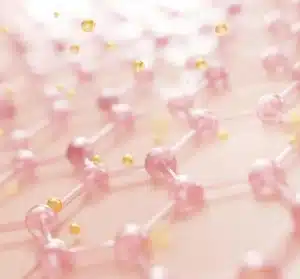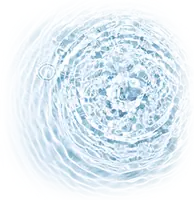Aesthetic-oriented medical procedures and lasers
Trained for several years in the techniques of the pioneer of aesthetic medicine, the Brazilian plastic surgeon Mauricio di Maio, I am constantly in search of the Natural Touch to ensure an enhancement that is visible yet natural.
Treatment is personalised and the aim is to enhance each patient's anatomy without distorting it.
Since childhood, I have been passionate about art and architecture.
To quote A. Einstein "Kindness, beauty, and truth have been the ideals that have illuminated my path and, day after day, have given me the courage to face life with good cheer.".
This passion has allowed me to develop an artistic eye and to create unique techniques for facial and body enhancement.
My goal is to help you achieve natural results that highlight your own beauty.
I use the most advanced techniques and the highest-quality products to guarantee safe and effective outcomes.
Whether you want to reduce signs of aging, improve skin texture, or correct imperfections, I design a tailor-made treatment plan for each patient.
I firmly believe that every face is unique and deserves a personalized approach.
My expertise and meticulous attention to detail allow me to deliver subtle and natural results, without ever compromising the patient’s expressions or personality.

"No external grace is complete if it is not enlivened by inner beauty. The beauty of the soul spreads like a mysterious light over the beauty of the body."
Victor Hugo

Aesthetic-oriented medicine procedures encompass a set of non-surgical techniques and treatments aimed at improving physical appearance and combating the signs of aging. They offer effective solutions to reduce fine lines, fill wrinkles, firm the skin, redefine facial contours, smooth imperfections and revive the complexion’s radiance. When the first signs of skin aging appear, such as wrinkles, fine lines, skin laxity, dark circles or redness, it is possible to resort to aesthetic-oriented medicine procedures to prevent and correct these imperfections. Injections of hyaluronic acid and botulinum toxin are quick and effective solutions to smooth expression lines, correct facial volumes, and fill folds. Facial rejuvenation can also be achieved through treatments such as peeling, mesotherapy, radiofrequency, lasers and ultrasounds.
These different techniques make it possible to stimulate collagen production, improve skin quality and restore the skin’s radiance. It is recommended to consult an experienced physician to determine the most suitable treatment. During the first consultation, the doctor will identify the needs of the patient, establish a diagnosis and propose a personalized treatment plan. Some treatments may require local anesthesia, but the after-effects are always minimal. In summary, aesthetic-oriented medicine procedures are an option to consider when the appearance of skin aging signs becomes bothersome from an aesthetic or psychological point of view. Whether to reshape facial contours, reduce wrinkles, tighten the skin, smooth imperfections or improve skin elasticity, solutions exist.

Botulinum toxin injections are among the most common treatments in aesthetic-oriented medicine. They are mainly aimed at reducing expression lines such as forehead wrinkles, crow’s feet around the eyes, and frown lines between the eyebrows. The procedure consists of injecting the toxin into the muscles responsible for these wrinkles to induce their temporary relaxation. Results are visible after only a few days and generally last between 3 and 6 months. This treatment is appreciated for its quick action and natural effects when properly performed.
Hyaluronic acid is a substance naturally present in our body that can be used to fill wrinkles and restore facial volume that changes with age. Injections make it possible to treat various areas such as nasolabial folds, marionette lines, or to enhance the volume of the lips and cheekbones. This treatment has the advantage of being reversible, and the product used is biodegradable. Results are immediate and can last up to 18 months depending on the product’s density, the indication, and the patient’s metabolism.
Laser technology plays an important role in aesthetic-oriented medicine to treat various skin issues such as pigment spots, skin laxity, or to perform tattoo removal. Different types of lasers are used depending on the indication to be treated.
Results are often remarkable, but multiple sessions are usually required to achieve optimal outcomes.
Surgical lifting used to be a popular option for patients seeking visible and long-lasting facial rejuvenation. Today, thanks to advances in aesthetic-oriented medicine, it is possible to achieve a lifting effect without resorting to cosmetic surgery. This can be done through injections of Sculptra and hyaluronic acid (the MD Codes technique invented by the Brazilian surgeon Mauricio de Maio).
Thread lifts represent another non-surgical alternative to the traditional facelift.
These resorbable threads are inserted under the skin to create tension, redefining the facial oval and stimulating the natural production of collagen. This technique is ideal for patients seeking a lifting effect without undergoing major surgery, with a much shorter recovery period.
Dr. Romano is not in favor of this technique due to its unpredictable results.
Radiofrequency uses electromagnetic waves to deeply heat skin tissues without damaging the skin’s surface. This method stimulates the production of collagen and elastin, helping to firm the sagging skin of the face, neck, and body. Highly appreciated for its effectiveness, this technique requires several sessions to achieve optimal and long-lasting results.

The preliminary consultation before aesthetic-oriented medicine procedures is an important step for the thorough assessment of the patient’s needs and expectations.
The physician examines the skin condition, facial features, and complexion, allowing them to propose a personalized treatment plan.
This first meeting also makes it possible to establish an accurate diagnosis and to discuss the desired objectives while taking into account any possible contraindications. It is essential that the physician has solid training and proven experience.

Aesthetic-oriented medicine is practiced by several medical specialties : dermatologists, plastic surgeons, and general practitioners. However, the physician specifically trained in these techniques plays a key role. Each specialist brings their unique expertise : dermatologists focus on skin pathologies, plastic surgeons can intervene for more invasive procedures such as facelifts or rhinoplasty, while the physician trained in aesthetic-oriented medicine techniques enhances and corrects imperfections through non-surgical methods. Collaboration among these different specialties allows for a comprehensive approach to patient care, ensuring harmonious and natural results.

When choosing a physician, several factors must be taken into account.
First, it is important to ensure that the practitioner holds the required qualifications and is registered with the cantonal medical council.
Next, their experience and specific expertise in the field of interest should be verified : botulinum toxin injections, hyaluronic acid, laser, cryolipolysis, radiofrequency.
A good physician should also be transparent about potential risks and expected results, and be able to advise against unnecessary procedures.
La médecine esthétique est une branche de la médecine qui se concentre sur les traitements non-invasifs ou peu invasifs pour améliorer l’apparence physique, réduire les signes de vieillissement et corriger certaines imperfections.
Il n’y a pas d’âge spécifique pour commencer les traitements de médecine esthétique. Cela dépend des besoins individuels et des recommandations d’un professionnel qualifié. Les consultations personnalisées permettent d’évaluer les options de traitement les plus appropriées.
Le coût varie en fonction du type de traitement, de la quantité de produit utilisé et de l’expérience du praticien. Une consultation personnalisée est nécessaire pour établir un devis précis.
Parmi les traitements les plus courants, on trouve les injections d’acide hyaluronique et de toxine botulique, les peelings chimiques, la mésothérapie, les lasers pour le rajeunissement de la peau et la réduction des taches, la radiofréquence et la cryolipolyse.
La durée des résultats dépend du type de traitement, du style de vie du patient et de son métabolisme. Les injections d’acide hyaluronique, par exemple, peuvent durer entre 6 et 12 mois, tandis que les effets de la toxine botulique durent 6 mois. Les résultats des peelings et des traitements laser peuvent durer plusieurs mois à plusieurs années.
Yes, this is possible to achieve optimum results.
Un médecin. Il est important de choisir un praticien qualifié, inscrit au Conseil national de l’Ordre des médecins, avec une formation spécialisée en médecine esthétique.
Aesthetic medicine treatments are generally non-invasive, require little or no recovery time, present fewer risks and offer natural, gradual results. They are ideal for patients looking for visible results without the need for surgery.
Yes, aesthetic medicine treatments are designed to offer natural, harmonious results. Qualified practitioners take care to respect the proportions and individual characteristics of each patient.
Most aesthetic medicine treatments are painless or cause very little pain. An anaesthetic cream can be applied before the session to make the procedures even more comfortable.
Side effects are slight and temporary: redness, swelling, bruising, sensitivity in the treated area. They generally disappear within a few days.
Il faut préciser au médecin les allergies, les traitements en cours, les antécédents médicaux et les traitements esthétiques reçus. Il est déconseillé de prendre certains compléments, l’aspirine et les anti-inflammatoires avant la procédure. L’arrêt des anticoagulants et des antiagrégants peut se faire qu’avec l’autorisation du médecin prescripteur.